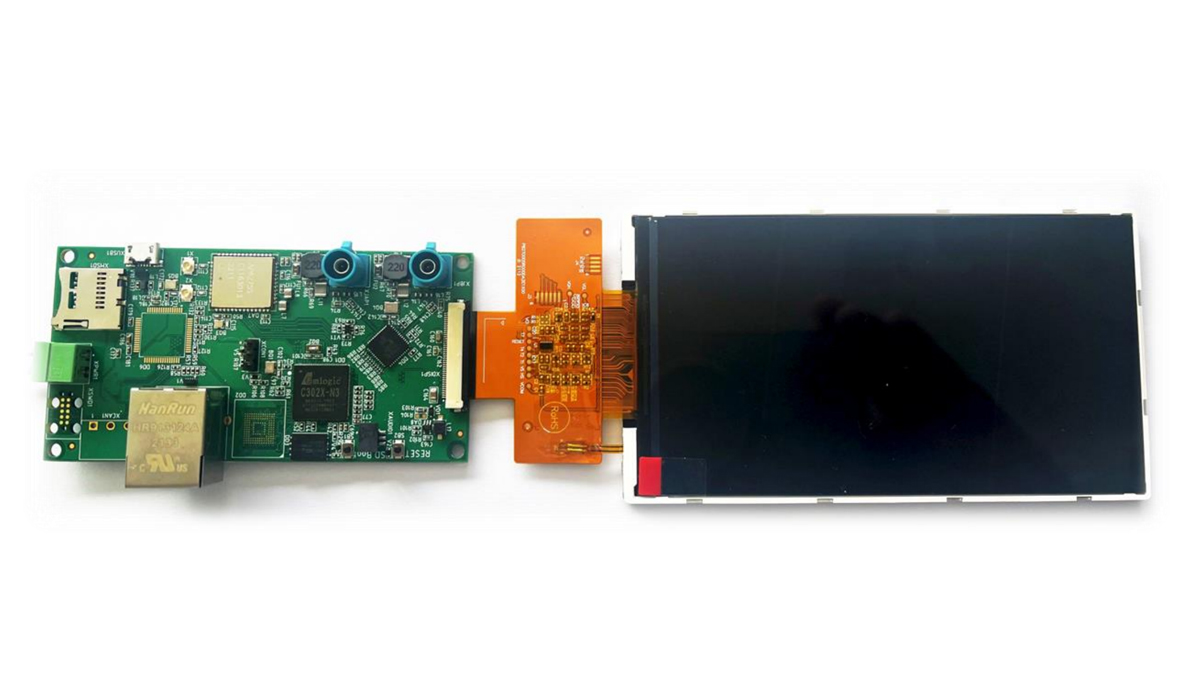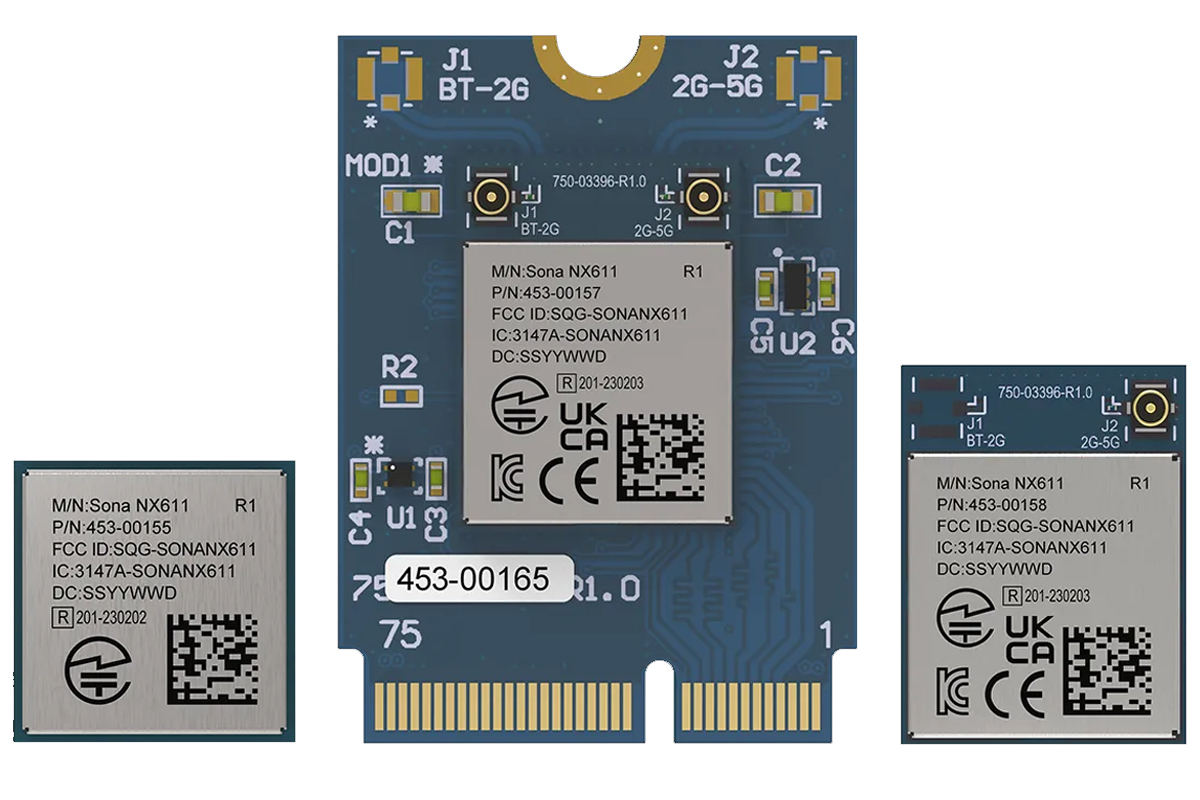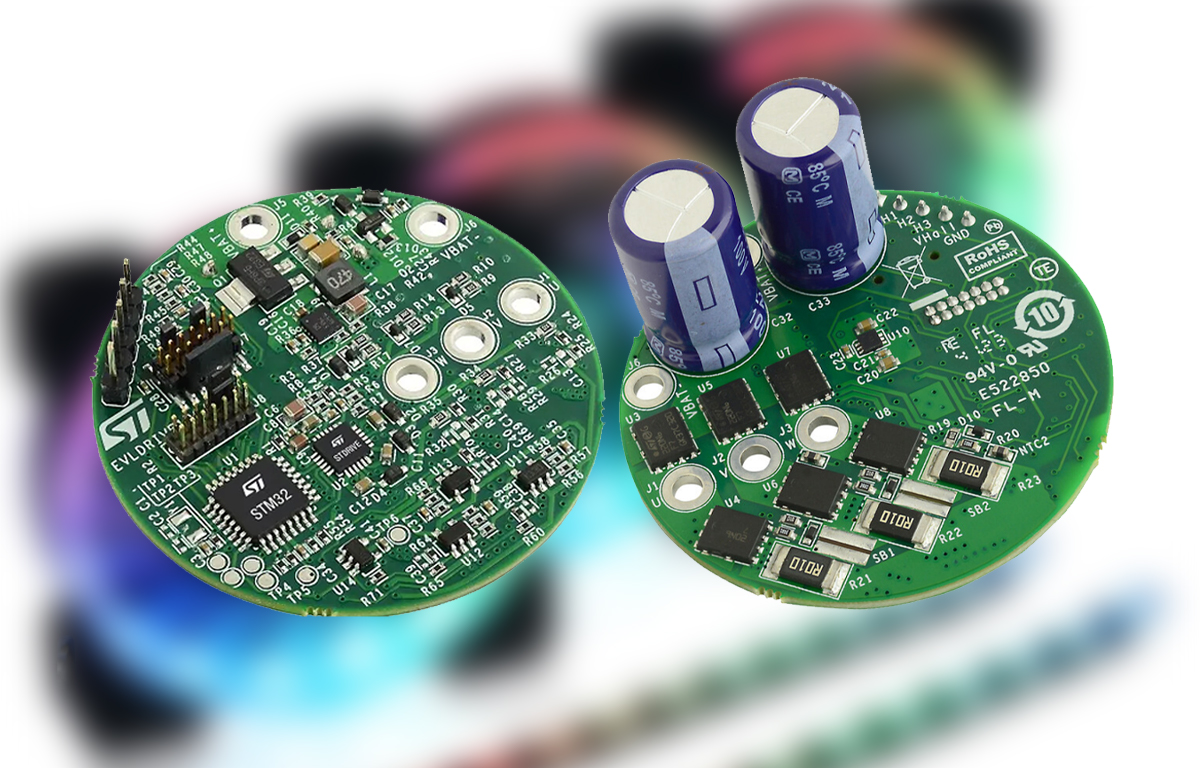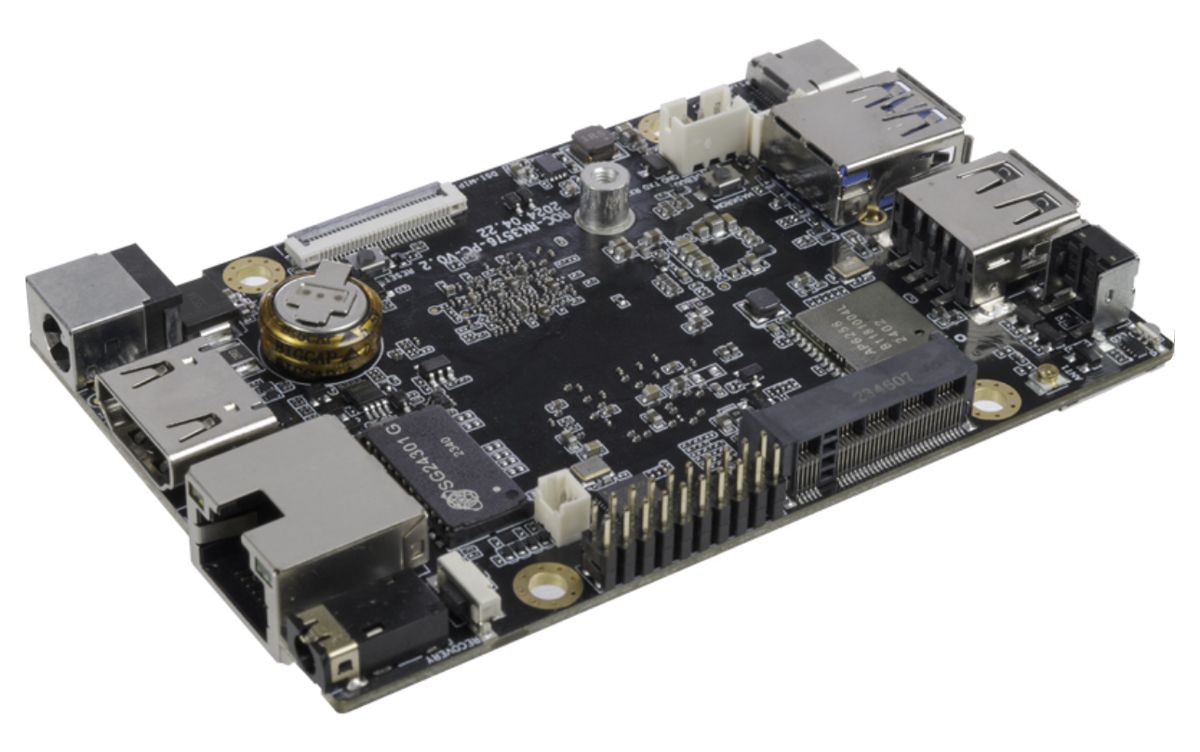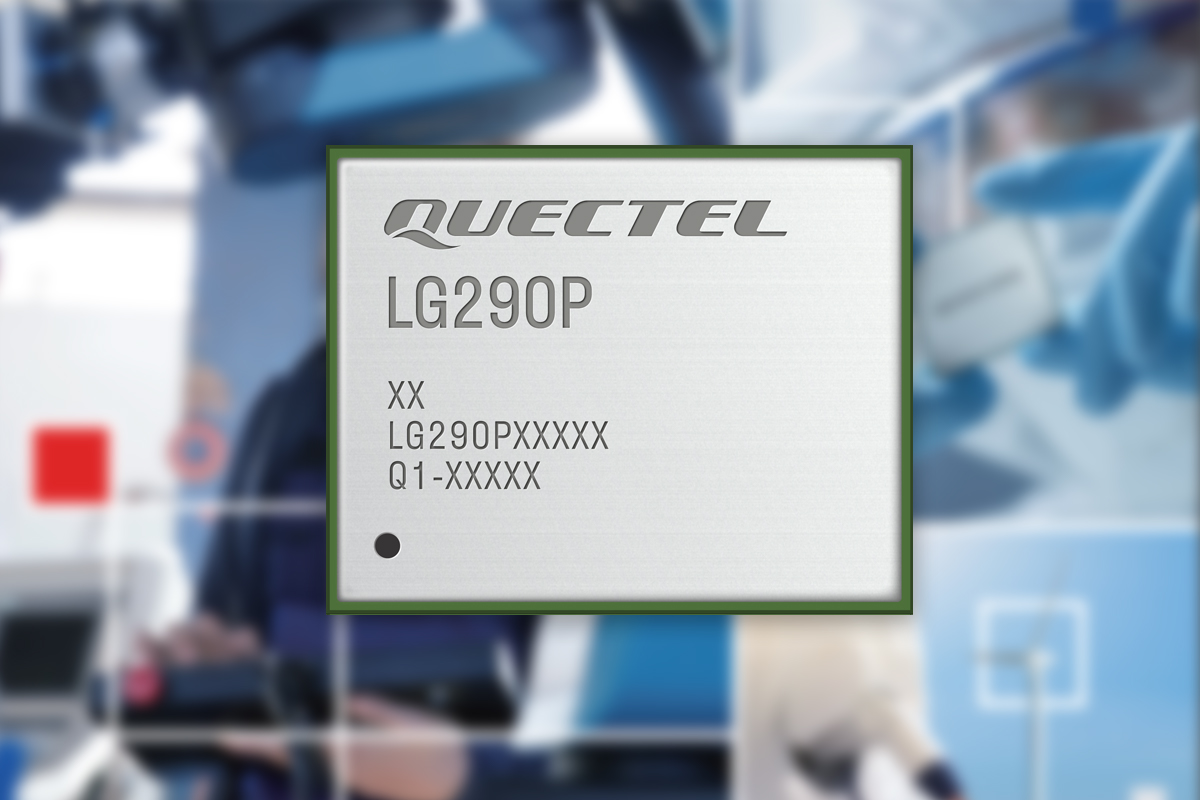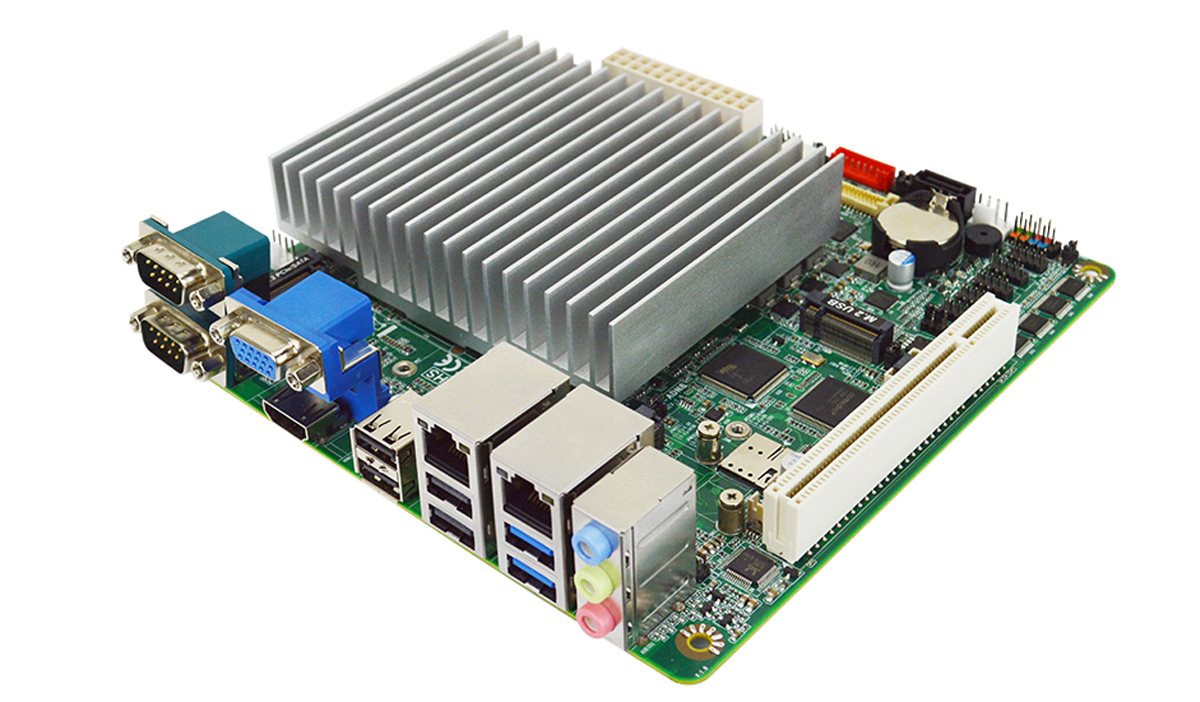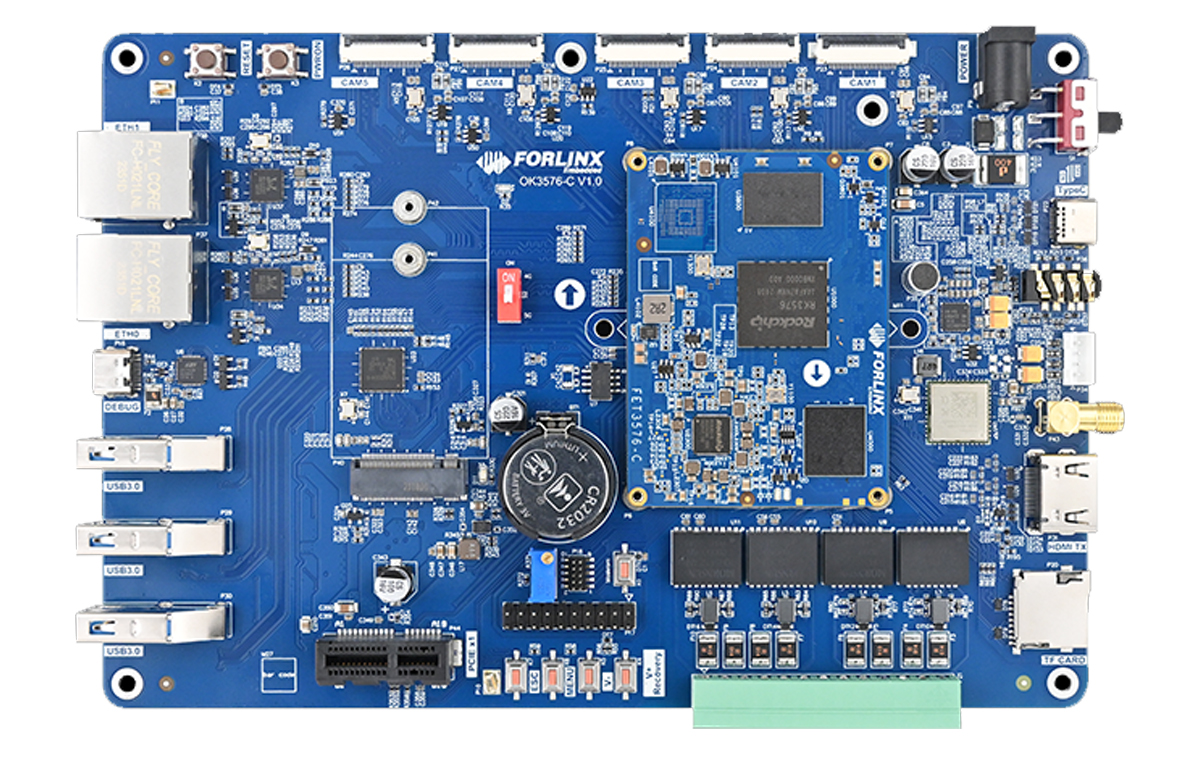The DAB Embedded CAMKIT-AML302-IMX462, is a compact AI camera kit built around the Amlogic C302X processor with 256MB DDR3 on-chip (SiP) and designed for image processing and machine learning applications. The board also includes GMSL2 interfaces that add support for a range of Sony camera sensors, including global shutter and 3D options. Additionally, it has 100Mbit LAN, Wi-Fi, BLE, and CAN bus connectivity which makes this board useful for various computer vision applications. Previously we have written about similar camera kits including the Pivistation 5, the OpenCV AI Kit Lite, the e-con Systems 360° Camera Kit, and much more Feel free to check those out if you are interested in the topic. DAB Embedded CAMKIT-AML302-IMX462 specifications Processor – Amlogic C302X CPU – Dual Core ARM Cortex-A35 2 TOPS Neural Processing Unit (NPU) OpenCV (Hardware Accelerator) Video Encoder – H.264/H.265/JPEG ISP – High-performance, up to 5MP with HDR System Memory – 256MB […]
Ezurio Sona NX611 – An NXP IW611-powered Wi-Fi 6 industrial IoT module
Ezurio, formerly Laird Connectivity, has announced the Sona NX611, a new Wi-Fi 6 module designed for industrial IoT applications. The module uses the NXP IW611 chipset and supports Wi-Fi 6 (802.11ax) and Bluetooth 5.4. It operates in the 2.4 GHz and 5 GHz bands, achieving data rates up to 600 Mbps, and can withstand industrial temperatures from -40°C to +85°C. The Sona NX611 comes in several form factors, including SiP (System-in-Package), M.2 1216 SMT, and M.2 2230 E-Key pluggable options. It is compatible with NXP processors and supports Ezurio’s Linux connectivity stack software and Android OS. The module is under development and is expected to be in mass production by September 2024. It will have global certifications like FCC, ISED, UKCA, CE, and Bluetooth SIG. Previously we have seen the IW611 and IW612 modules were used in the u-blox MAYA-W2 IoT module. We have also written about Laird RM126x LoRaWAN […]
STMicro EVLDRIVE101-HPD 1.9-inch motor driver board can drive 750W BLDC motors
STMicroelectronics has recently revealed the reference design for “EVLDRIVE101-HPD” their homegrown BLDC motor driver board that can drive up to a 750W BLDC motor. This compact 50 mm (1.9-inch) circular PCB combines STDRIVE101 3-phase, triple half-bridge gate-driver IC with an STM32G0 microcontroller, which is responsible for driving three-phase brushless motors. The driver board supports various motor-control strategies, including trapezoidal and field-oriented control (FOC), with both sensor’ed and sensorless rotor-position detection. Additionally, it has a wide operating voltage range of 5.5V to 75V and includes STL220N6F7 60V STripFET F7 MOSFETs, which have very low Rds(on) for high efficiency. Other features of the board include ultra-low power consumption in sleep mode, a single-wire debug interface, direct firmware update capability, and protection mechanisms such as under-voltage lockout, overtemperature protection, and cross-conduction prevention. All these features make this board suitable for applications like hairdryers, handheld vacuums, power tools, fans, drones, robots, and industrial equipment […]
Firefly ROC-RK3576-PC low-profile Rockchip RK3576 SBC supports AI models like Gemma-2B, LlaMa2-7B, ChatGLM3-6B
Firefly ROC-RK3576-PC is a low-power, low-profile SBC built around the Rockchip RK3576 octa-core Cortex-A72/A53 SoC which we also find in the Forlinx FET3576-C, the Banana Pi BPI-M5, and Mekotronics R57 Mini PC. In terms of power and performance, this SoC falls in between the Rockchip RK3588 and RK3399 SoCs and can be used for AIoT applications thanks to its 6 TOPS NPU. Termed “mini computer” by Firefly this SBC supports up to 8GB LPDDR4/LPDDR4X memory and 256GB of eMMC storage. Additionally, it offers Gigabit Ethernet, WiFi 5, and Bluetooth 5.0 for connectivity. An M.2 2242 PCIe/SATA socket and microSD card can be used for storage, and the board also offers HDMI and MIPI DSI display interfaces, two MIPI CSI camera interfaces, a few USB ports, and a 40-pin GPIO header. Firefly ROC-RK3576-PC specifications SoC – Rockchip RK3576 CPU 4x Cortex-A72 cores at 2.2GHz, four Cortex-A53 cores at 1.8GHz Arm Cortex-M0 MCU at 400MHz GPU […]
Quectel LG290P is the world’s first quad-band GNSS module (L1, L2, L5, and E6)
The Quectel LG290P is a quad-band, multi-constellation, high-precision, real-time kinematic (RTK) GNSS module that supports GPS, GLONASS, Galileo, BDS, QZSS, and NavIC constellations. A typical GNSS module like the SparkFun GNSS L1/L5 can receive signals from only one or two frequency bands, but the Quectel module can receive signals from four different frequency bands (L1, L2, L5, and E6) simultaneously and features built-in anti-jamming technology for improved signal reception in challenging environments. All these measures make this chip suitable for high-precision navigation applications like autonomous robots, UAVs, precision agriculture, surveying and mapping, and autonomous driving. Previously we have written about higher precision GPS modules like the SparkFun RTK EVK module, SparkFun RTK Torch module, the Cavli C17QS IoT GNSS module and much more feel free to check those out if you are interested in those topics. Quectel LG290P GNSS module specification Main module- LG290P GNSS Frequency bands and constellations GPS – L1 […]
Jetway JMTX-ADN8 mini-ITX motherboard features Intel N97 CPU, dual GbE, three display interfaces
The Jetway JMTX-ADN8 is a mini-ITX motherboard built around an Intel N97 (Alder Lake-N) processor. The board supports up to 32GB DDR5 RAM via a single SO-DIMM slot and can drive up to three independent displays powered by Intel UHD graphics. Additionally, it offers dual GbE LAN, nine USB ports both USB3.2 Gen 1 and USB 2.0, and multiple storage and expansion options including M.2 (M-key, E-key, and B-key) and SATA-III. The motherboard also includes PCI expansion and supports Windows and Linux operating systems. In one of our last posts, we wrote about the Jetway JNUC-ADN1, another Intel N97-powered SBC, but in a smaller Next Unit of Computing (NUC) form factor. Other than that we have written about similar motherboards in mini-ITX from factors including Radxa ROCK 5 ITX, MW-100-NAS, and ASRock IMB-A8000 feel free to check those out if you are looking for mini-ITX motherboards. Jetway JMTX-ADN8 mini-ITX SBC […]
Forlinx FET3576-C Rockchip RK3576 SoM powers feature-rich OK3576-C board for AIoT applications
Forlinx FET3576-C SoM is a new System-on-Module built around the Rockchip RK3576 SoC which features four Arm Cortex-A72 and four Cortex-A53 cores made from a 22nm lithography process. The SoM is available with 2GB or 4GB of LPDDR4 RAM option and can be equipped with up to 32GB of eMMC storage. Additionally, it has 6 TOPS NPU power and supports standard peripherals like GbE Ethernet, Wifi, Bluetooth, LVDS, MIPI DSI, and much more. All these features make this device useful for IoT, edge computing, digital signage, and many other applications. The new FET3576-C SoM and its OK3576-C development board look very similar to the Forlinx FET3562J-C SoM and related board we covered earlier this month. But the main difference between the two is that the new one is built with the RK3576 SoC whereas the old one is built around the Rockchip RK3562(J) SoC. Previously we also saw that the […]
Seeed Studio Wio Tracker 1110 Dev Kit supports Meshtastic for off-grid communication
The Seeed Studio Wio Tracker 1110 is a dev kit designed to work with the Meshtastic network. The board is built around a Nordic nRF52840 multiprotocol Bluetooth 5.4 SoC and uses the Semtech LR1110 LoRa transceiver for communication. Seeed Studio is selling the Wio Tracker 1110 development board in a bundle with an OLED display and a GNSS receiver, providing everything needed to start experimentation for peer-to-peer LoRa mesh networking. Meshtastic is a free, open-source, decentralized mesh network that uses LoRa radios to establish a low-power, long-range, off-grid communication system in areas without reliable infrastructure. Driven entirely by the community, Meshtastic enables decentralized, encrypted communication without the need for a dedicated router or phone. Previously we have written various versions of the Wio Tracker including the Wio GPS and Wio LTE GPS Tracker. Since Meshtastic projects are becoming popular among developers and enthusiasts, we will likely see many more dev […]


